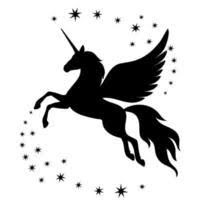Lovers of Sophia. Jan29th Observing report.
Added on 31 January 2024
Amateurs are lovers by definition and Sophia is wisdom and knowledge (Σοφία) so it must follow that we are lovers of Sophia. Not so much in the Gnostic sense but rather following a tradition of seeing for ourselves, and with our own eyes and instruments, what is laid out in front of us, in the vast space above, on starry nights.
As amateurs we have a unique ability to observe the sky without a paradigm, if we want, and get to know the Universe better by simply immersing ourselves in its wonder; something I believe we can only do by being out at night, recording, watching and questioning. Think of it this way; would you try and know a chocolate bar by eating it or reading the list of ingredients on the label?
The short days and long nights of January are almost over, but February and March offer (hopefully) many nights when we can be out early and home again long before the witching hour, and tonight was one of those rare and exquisite, cloudless, Moonless and calm occasions.
Arriving at the Observatory just after 5pm with the Sun having set and the evening twilight radiant in the West, Paul and I set up our telescopes to await whoever would be our companions for the night ahead.
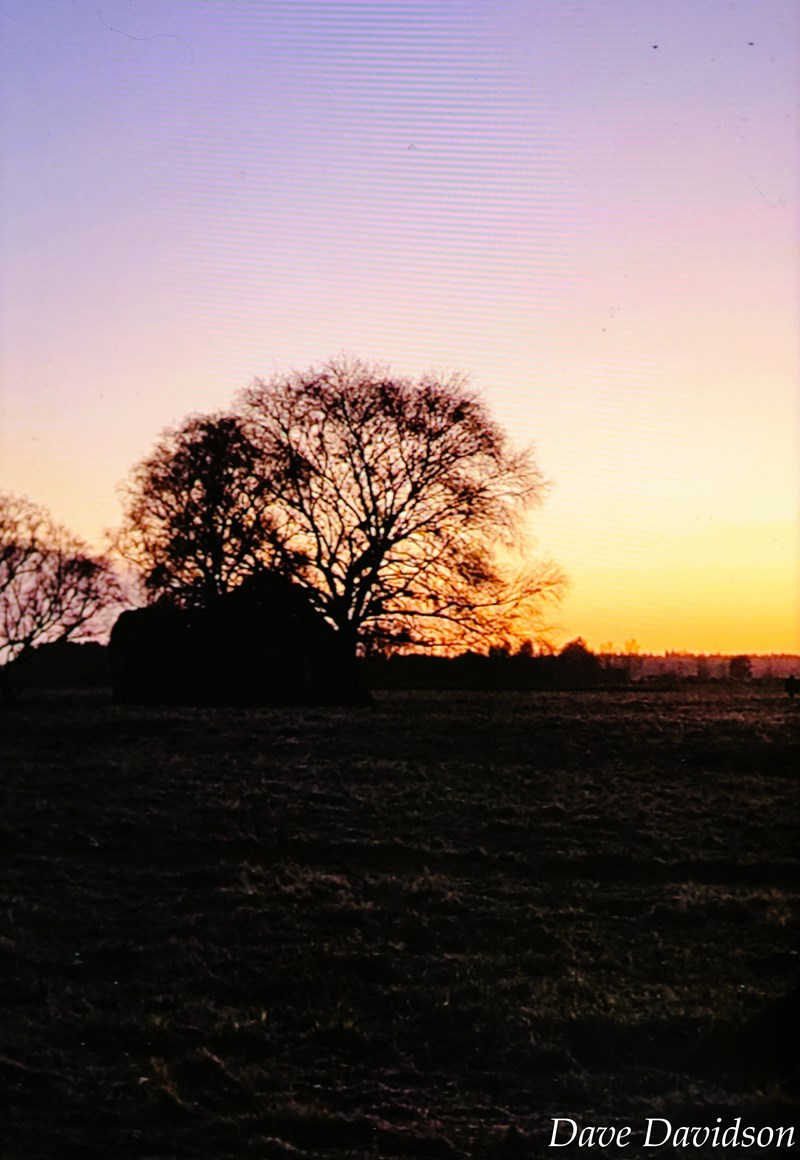
For now, the sky was still bright with a peach and red blush arching up from the Western horizon; but to the East, the first glimmer of stars showed through the approaching shadow of night. Darkness comes swiftly at this time of year and it was not long before the winter constellations revealed themselves star by star until the map of the heavens was complete and in astonishing detail.
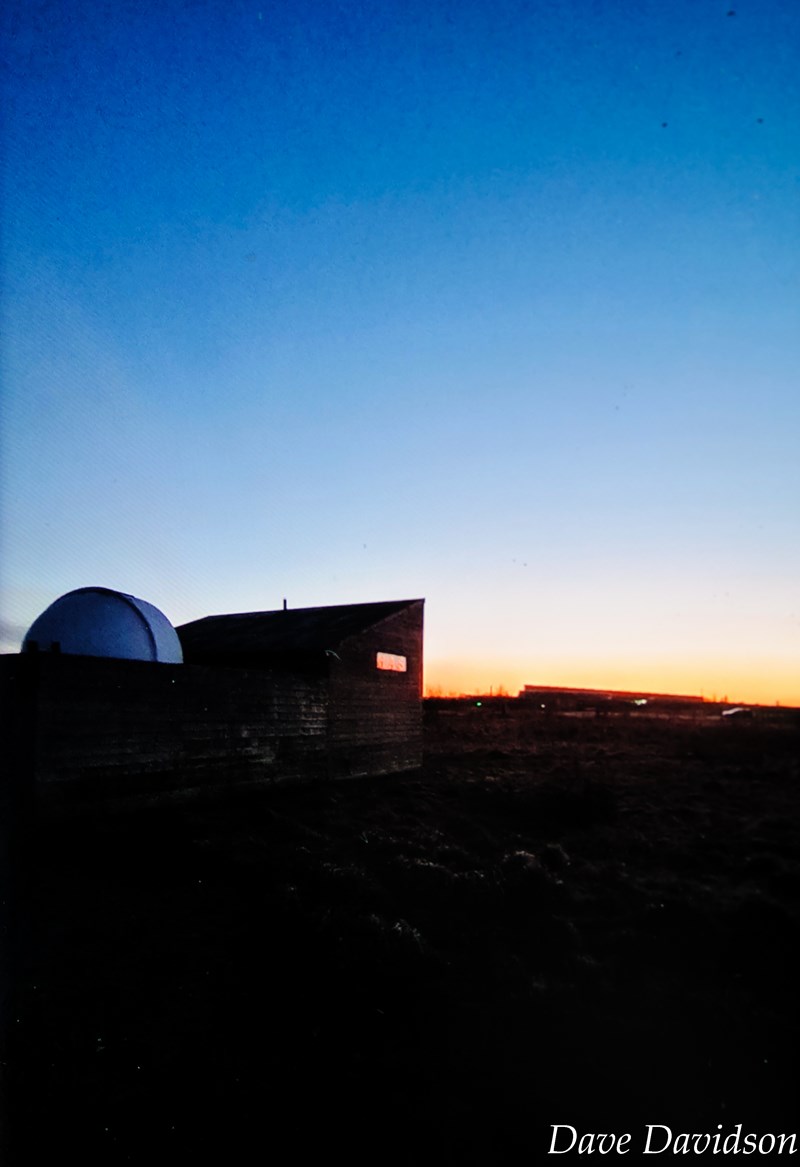
One by one our friends began to arrive. John McLeod, Pauline, Norma, Kristina and her Mum, Carl and a visitor from 'Facebook' (forgive me not remembering your name); and so our cast of actors were assembled on the starry stage.
Pauline's part was to fix the pesky and errant telescope in the 'dome', so she set about her task while the rest of us began a search of the sky for interesting things to see up-close with the power of the 12 inch Dobbin, Paul's remarkable 6 inch refractor, Carl's 8 inch Cassegrain and my small, but extraordinarily sharp, 80mm refractor.
I began by showing Kristina and her Mum the planet Jupiter and the attendant moons of Ganymede, Callisto, Io and Europa with the 12 inch reflector. Then, just as the 'Wows' were subsiding from that encounter, the ISS crept up from the West, low to the horizon. Believe it or not, I swung the big telescope toward it and followed it across the sky! Both Kristina and her Mum saw it several times, albeit momentarily in the eyepiece as it sped across the field of view. Remember, a Dobbin doesn't track things, you have to push it around! They were ecstatic, as was I; only ever having once before, done this. You could see the wings of the spacecraft quite clearly, even if only for a second!
Awesome!
So how would you follow that act? Well that was quite easy actually. We fitted an ultra high contrast filter to a wide-field eyepiece and pointed it at M42, the Great Nebula in the soul of Osiris, or Orion as we say. Oh boy! this is a sight that will stay with you forever! Only a telescope can let you see the stars and the nebulosity in M42 at the same time. A photograph, ( of which there are millions) cannot cope with the dynamic range of light emitting from it and a long exposure to show the swirling clouds of luminous vapours makes the central stars blow-out, creating a brightly glowing ball of light with no definition at the core. A telescope lets you see this wonder with new eyes. The cavernous depths of the Nebula are now inset with a tiny ring of four stars that shine with a mesmerizing intensity which belies their apparent size. Now, there are more than four stars in the central ring but the other ones are of the 11th magnitude and are designated E and F; the others (I and G) are even fainter and may well be beyond our power to see with the limiting size of our equipment. Not that it's going to stop us trying! Few that I know, including myself have even seen the E and F ones. (At least up until later tonight that is!)
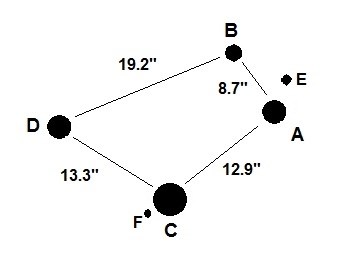
Here is a diagram of the 'Trapezium' of stars at the core of M42, showing the E and F stars.
As the evening progressed we looked at many things of great interest; like the faint owl Nebula M97 and the nearby edge-on galaxy M108. The Crab Nebula M1, the ever-popular and fascinating M81 and M82 and Alcor and Mizar in Ursa Major. Once known as the 'horse and rider', these stars were used by the Romans to determine your fitness for the army. If you could see both stars then you were in! If you could not, then likely you would have been lunch for a lion. Mizar itself splits into two matching stars in even a very small telescope and is beautiful and fresh no matter how many times you see it. Yet all the while we were drawn back to Orion to look again at the fabulous beauty of the Great Nebula and we all looked on, open-mouthed, for long into the night as it traversed the southern horizon.
It was bitter cold and ice and frost was forming all around us. The grass now crunched beneath our feet; lenses and eyepieces needed de-frosting and a gradual veil of high, thin cloud was diluting the sky quality: A lonely woodcock swerved past my shoulder on its way to find some softer ground to dig for worms. It was time for a break, so we went into the 'office' to warm up and take stock of the night so far. After tea and coffee the players now thinned out and one by one set off for home leaving only Carl, me and Paul to act out the final scene of tonight's tale.
When we opened the door and walked out into the remaining night we were halted, all at once, by a new world! Frozen to the spot with awe at our new surroundings, Carl and I exclaimed, almost in unison, that here we did not need a telescope to see the Universe! The veil of cloud was gone and the soft pink light of the rising moon now etched the great tree beside the compound in an intricate silhouette against the glow from the East. The stars now leapt from the void with startling clarity and we carefully inched forward to the gate with our eyes cast upward, transfixed on the sky. A feeling of profound wonder permeated the air around us and we paused again to savour the moment. Suddenly, our eyes swept round to the West and we stood in disbelief as two bright lights emerged from the sky and grew in intensity to out-shine Jupiter! Keeping close together, they began to move almost imperceptively toward us. Bewildered for a moment, we did nothing but look on as they crept ever nearer. This was the same as Paul and I had seen last year but only this time coming from the West instead of the East. Paul said "get the 'scope on them!" and I flew into action and grabbed at the Dobbin. As I did though, they just vanished from view. They were high in the sky and shone like stars but their movement seemed contrived; unlike a satellite that travels in a determined but blind trajectory. Baffling. Sometimes though, the night sky is like that; you are watching but it's watching you back! Kind of like your smart phone does: And you don't always need lights in the sky to sense that.
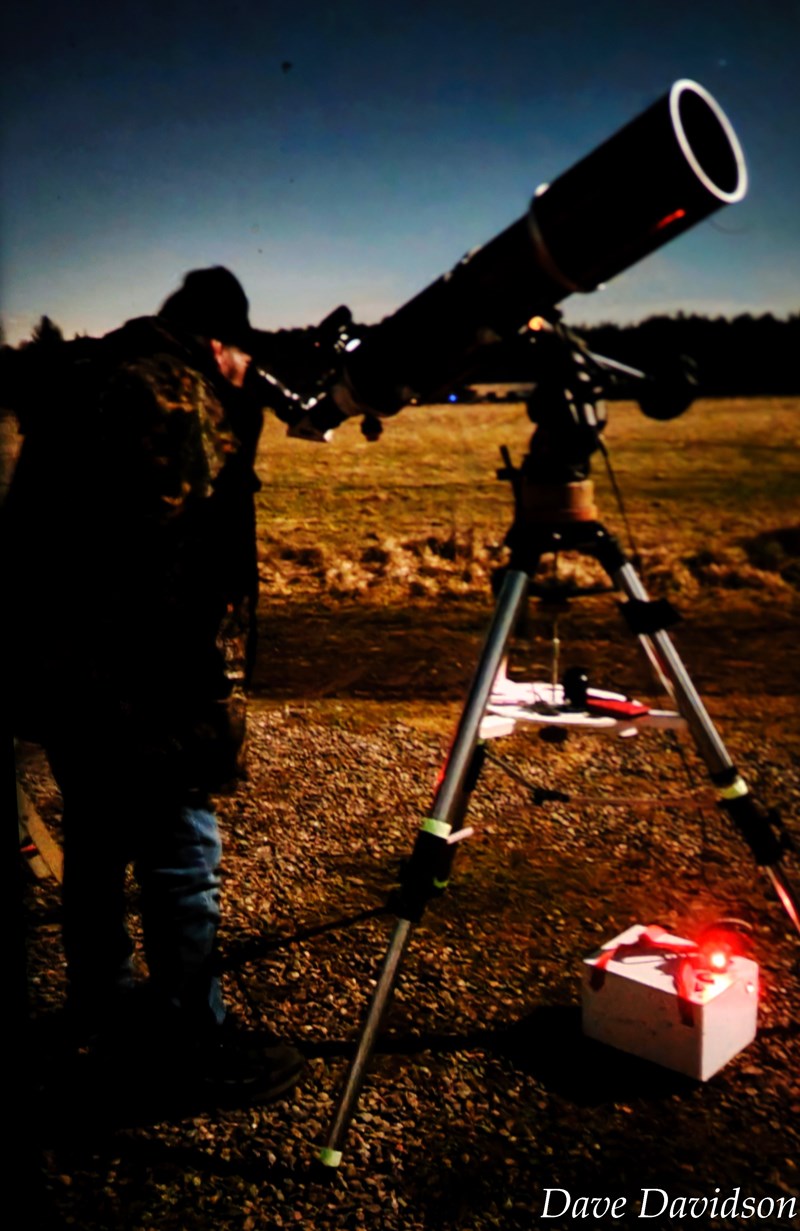
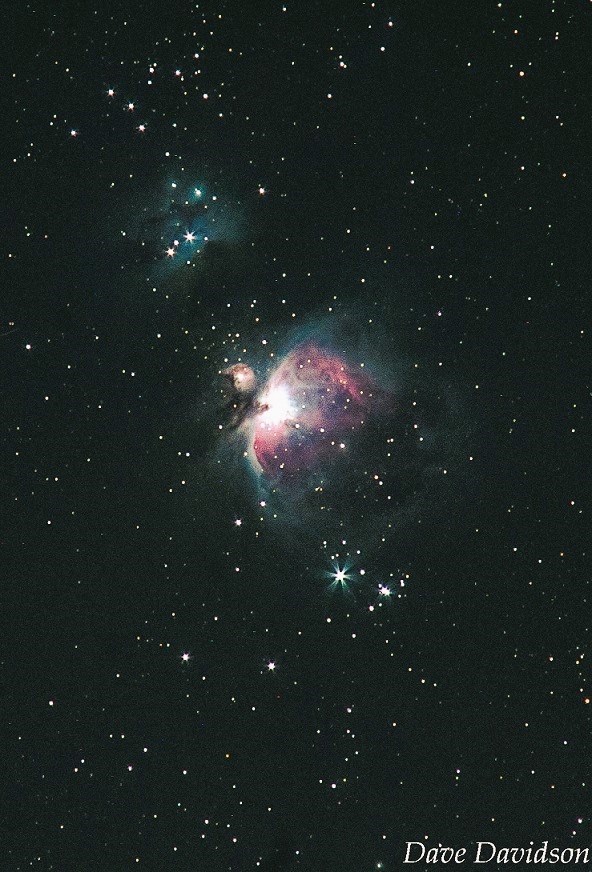
So we continued with our research anyway and carried on looking into the Nebula of M42. What we were doing was using different filters on Paul's telescope to maximise what we could see. The clarity of Paul's new 6 inch refractor is difficult to put into words, but even if there is no language to describe it, the result is knowledge of things that would otherwise go unseen. Yes, here is the moment that Paul called us over to say that he could see the F star in M42! I could scarcely believe it! I've never seen it before and neither had Paul or Carl; but there it was as plain as day; a tiny gleaming speck next to the 'C' star! If you love astronomy then you have to see this for yourself and any night in the coming months that Orion hunts his way through the stars then I am certain that Paul will share this treasure with you, if you take the time to visit the Observatory.
What an amazing night it had been and for the early part, a chance to share the night with friends. It was great to see so many lovers of Sophia there.
Dark skies forever.
